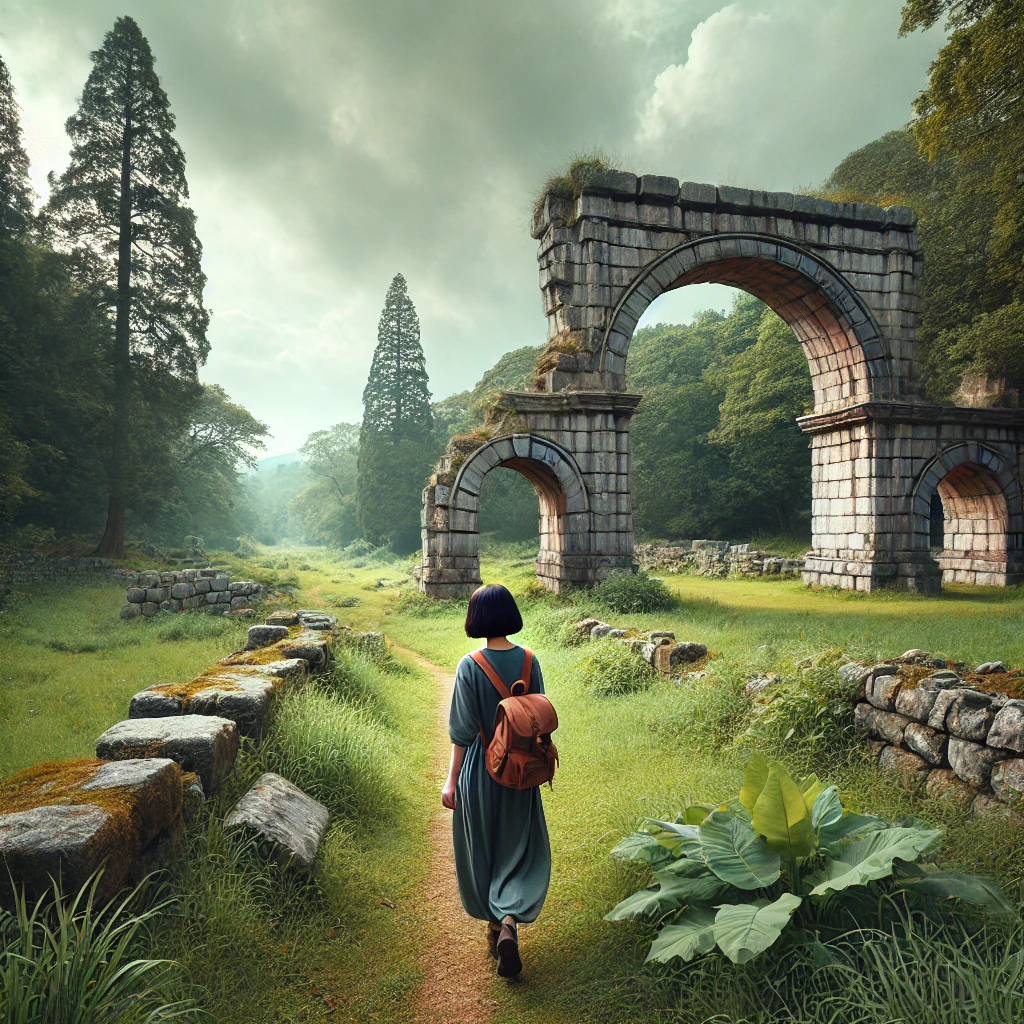ChatGPT:
Fiesole is a historic town located in the hills overlooking Florence, Italy. It has a rich past that predates Florence and has played a significant role in the region’s history.
Origin and Early History
Fiesole was originally founded by the Etruscans in the 9th–8th century BCE. It was one of the most important Etruscan cities in northern Italy, as evidenced by its well-preserved city walls and the remains of an Etruscan acropolis. The town’s strategic position on a hill provided a natural defense and a vantage point over the Arno Valley.
Roman Era
In the 1st century BCE, Fiesole was conquered by the Romans. The Romans transformed the city, building a forum, a theater, baths, and other public structures, many of which still survive. The Roman theater of Fiesole, dating back to the 1st century BCE, is one of its most famous landmarks.
Medieval Development
During the early Middle Ages, Fiesole was an important religious and political center. It had its own bishopric, and its cathedral, San Romolo, became the seat of the bishop of Fiesole. However, as Florence grew in power, tensions between the two cities escalated. In 1125, Florence conquered and largely destroyed Fiesole, reducing its influence and integrating it into the Florentine sphere.
Renaissance and Beyond
By the Renaissance, Fiesole had become a retreat for wealthy Florentines who built villas and gardens in the hills. Its serene atmosphere and panoramic views attracted artists, writers, and intellectuals, including Leonardo da Vinci, who is said to have experimented with flight there.
Modern Fiesole
Today, Fiesole is a charming town known for its historical ruins, scenic beauty, and cultural significance. It offers a peaceful contrast to Florence while maintaining strong historical ties to its larger neighbor. Tourists visit for its archaeological sites, the Convent of San Francesco, and breathtaking views over Florence.
Fiesole remains a symbol of Tuscany’s deep historical roots, blending Etruscan, Roman, and medieval influences into a picturesque and culturally rich destination.
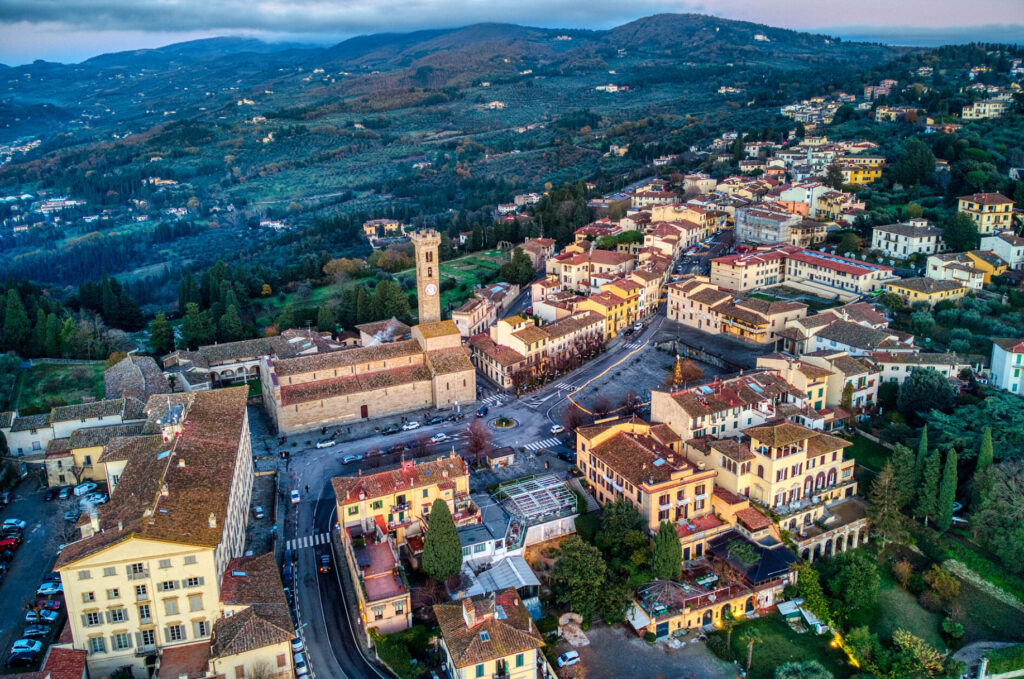
Fiesole offers a variety of historical monuments and attractions that reflect its Etruscan, Roman, and medieval heritage, along with stunning views over Florence. Here are the key sites to visit:
Archaeological and Historical Sites
1. Etruscan Walls – Remains of the massive fortifications built by the Etruscans (8th–6th century BCE), showcasing the city’s ancient origins.
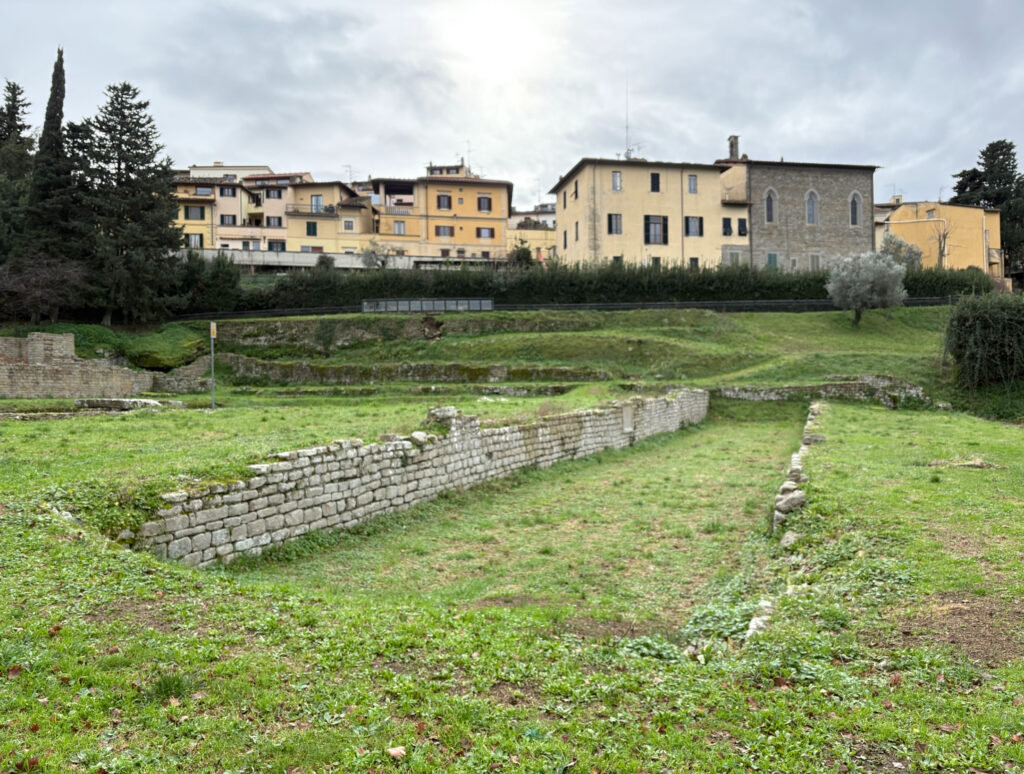
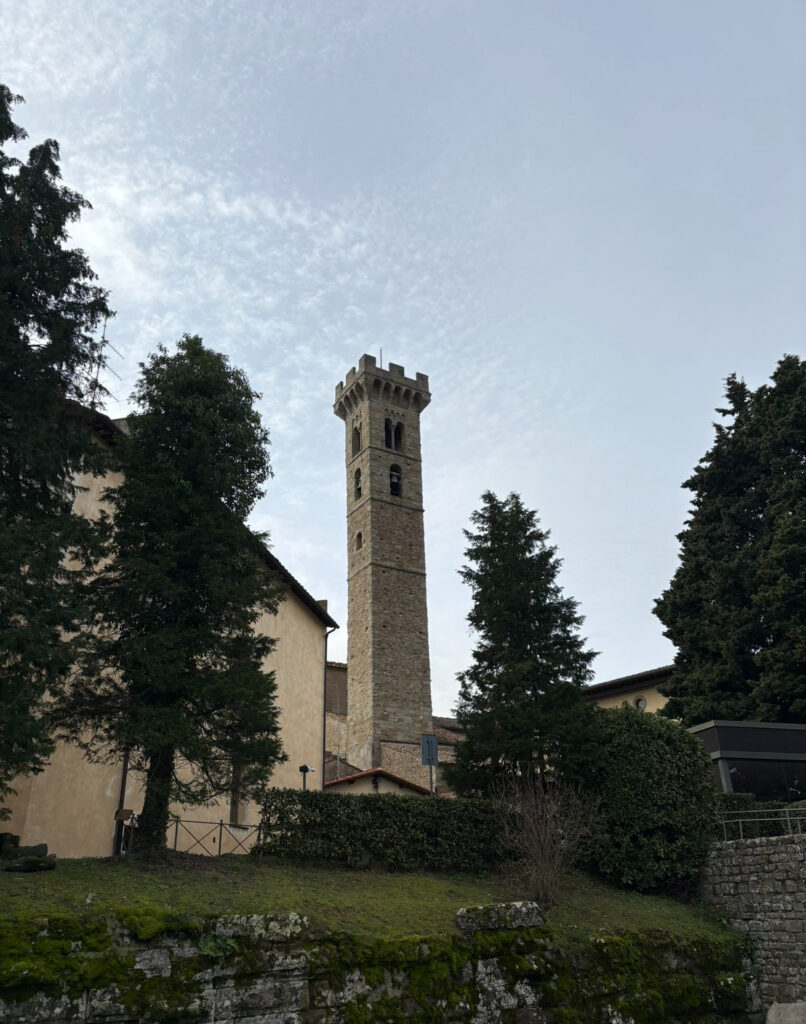
2. Roman Theater – A well-preserved 1st-century BCE amphitheater still used for performances today.
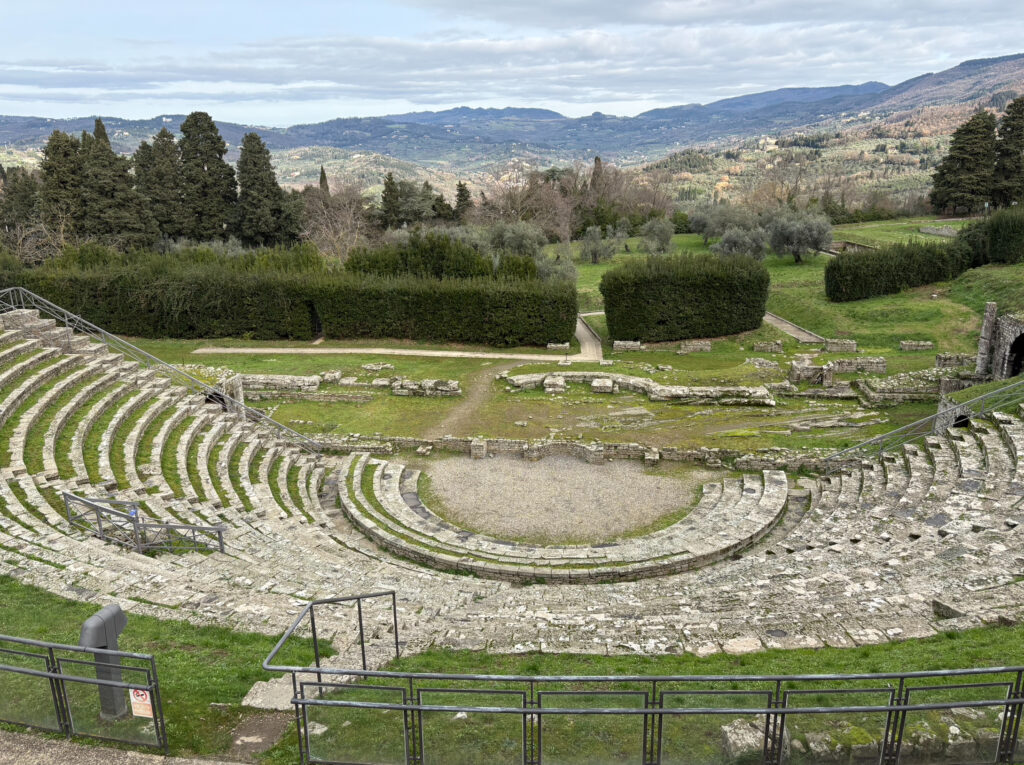
3. Roman Baths – Ruins of a public bath complex near the theater, offering insight into daily life in Roman Fiesole.
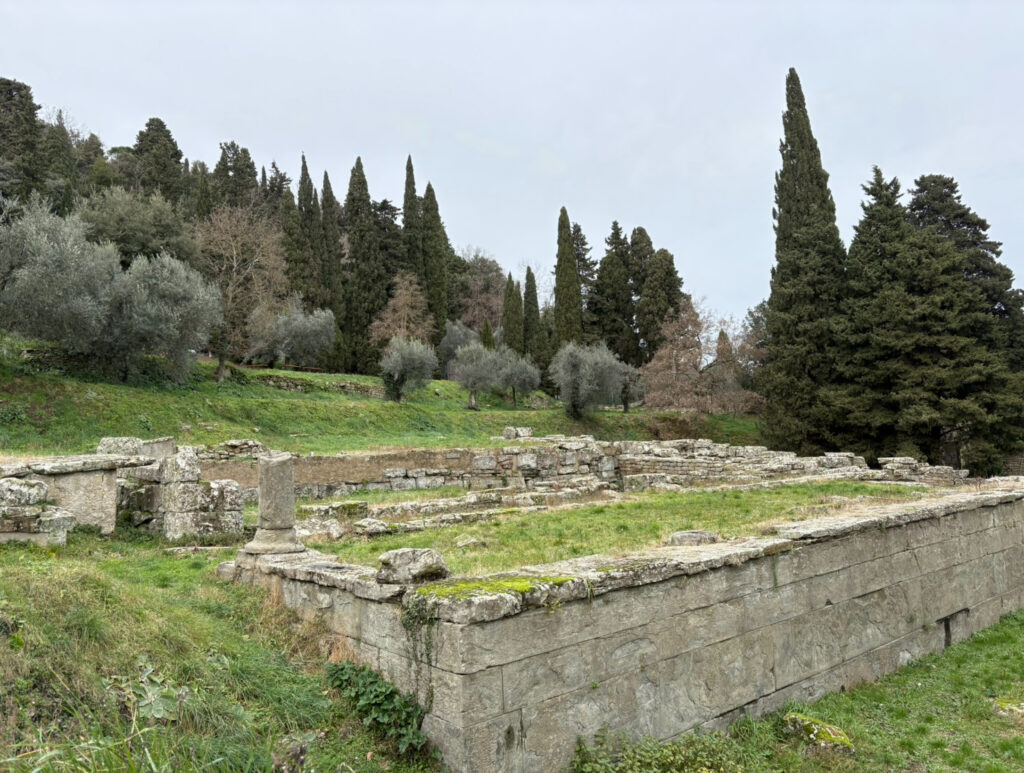
4. Etruscan-Roman Temple Ruins – Located within the archaeological area, these remains indicate Fiesole’s religious significance in antiquity.
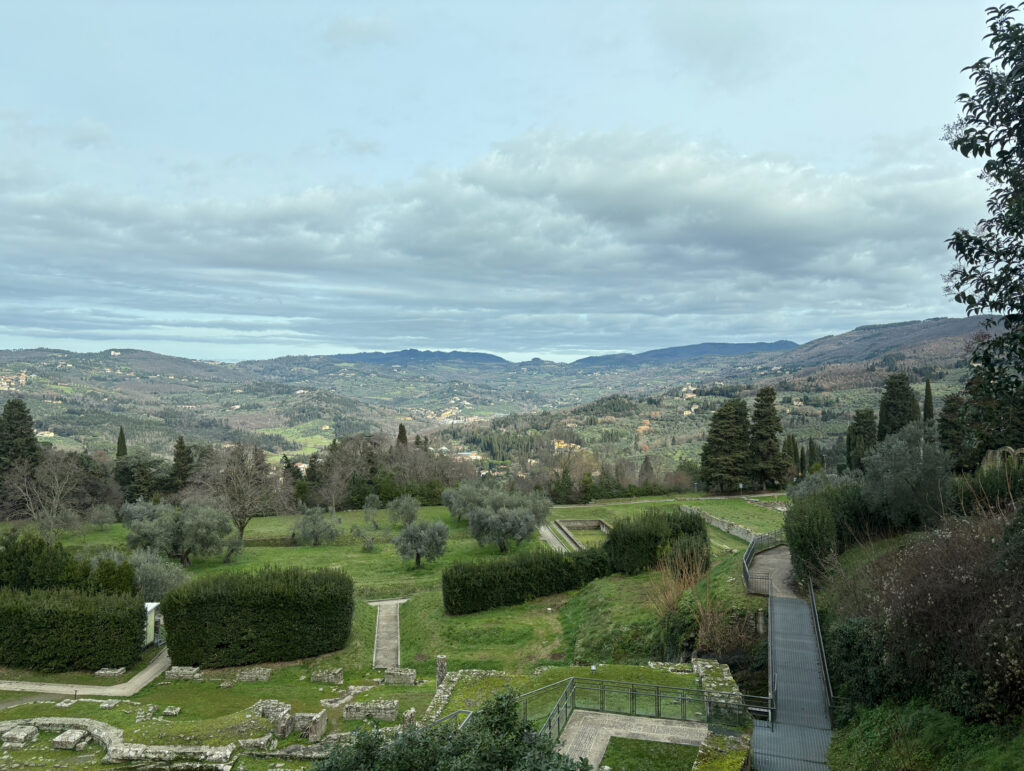
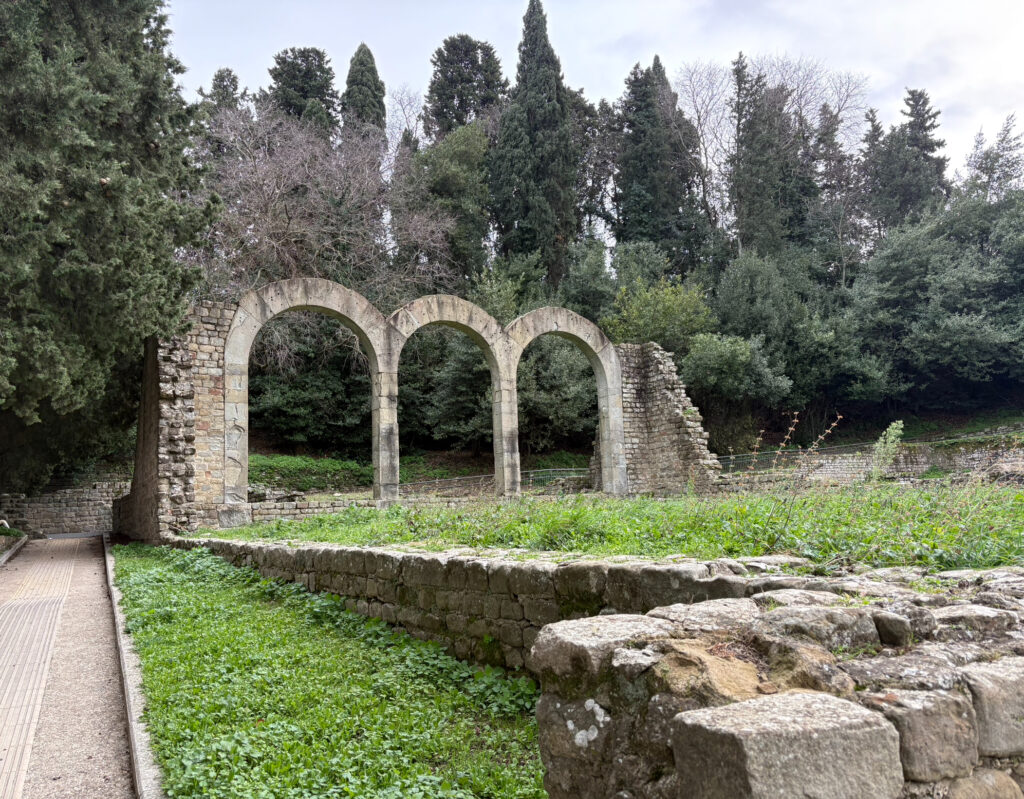
5. Palazzo Vescovile (Bishop’s Palace) – A medieval building that has served as the bishop’s residence since the 11th century.
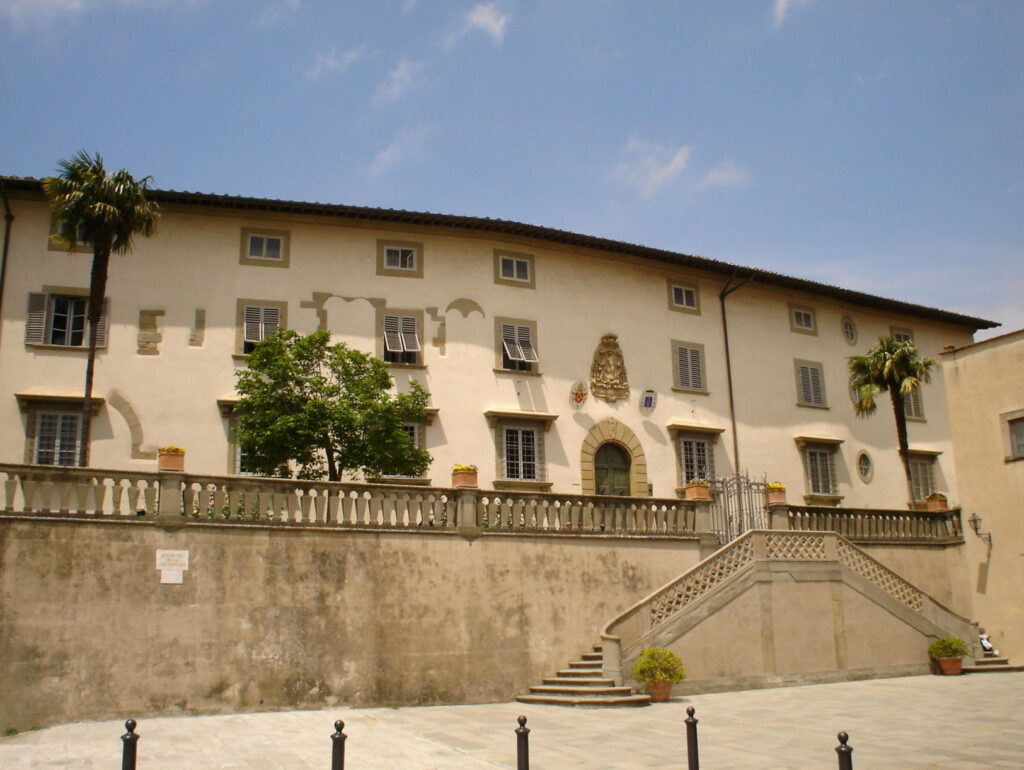
Religious Sites
6. Cathedral of San Romolo (Duomo di Fiesole) – Founded in the 11th century, this Romanesque cathedral houses beautiful frescoes and the tomb of Bishop Leonardo Salutati.
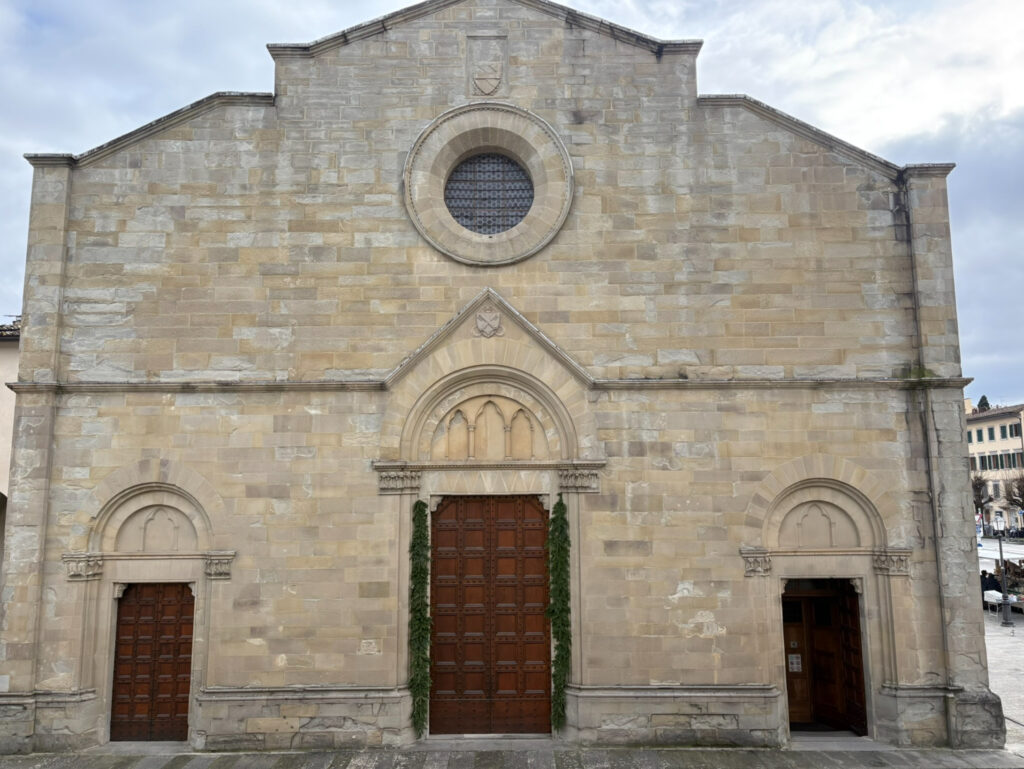
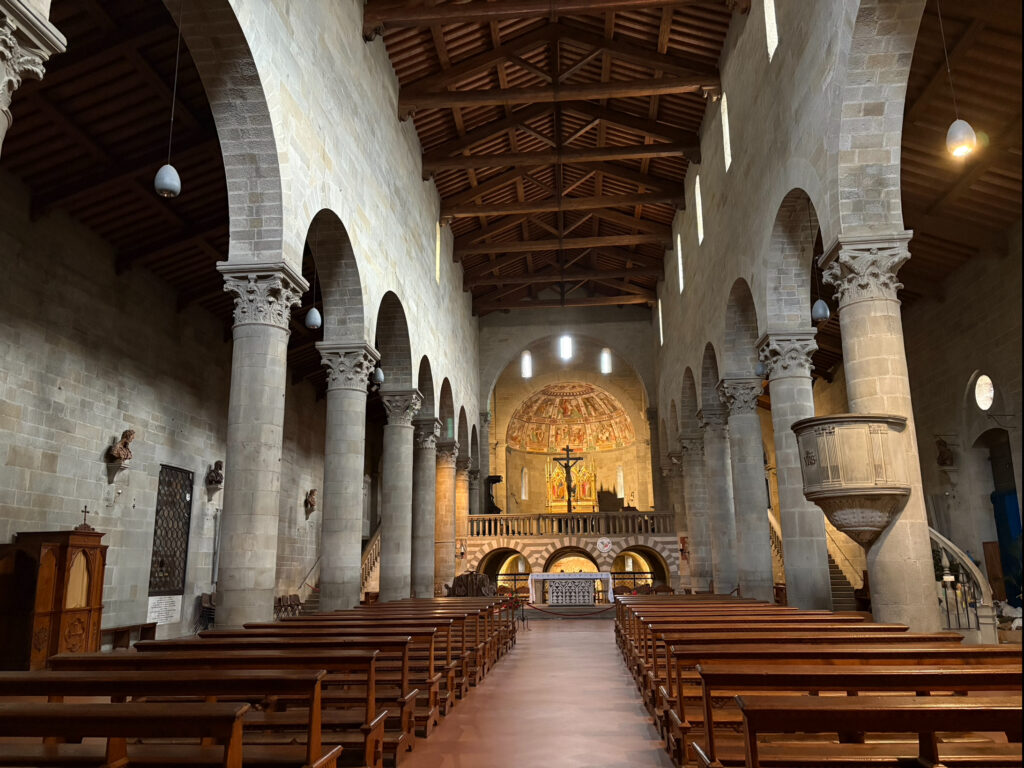
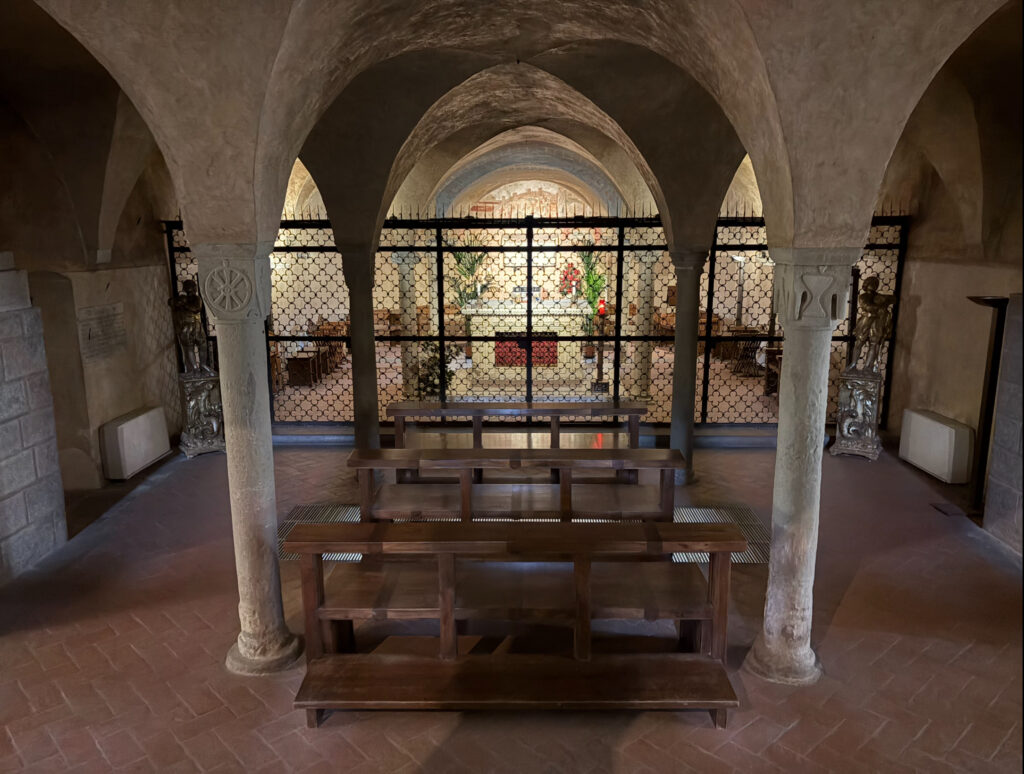
7. Convent of San Francesco – A 14th-century Franciscan monastery at the highest point of Fiesole, offering stunning views and a small museum displaying religious artifacts
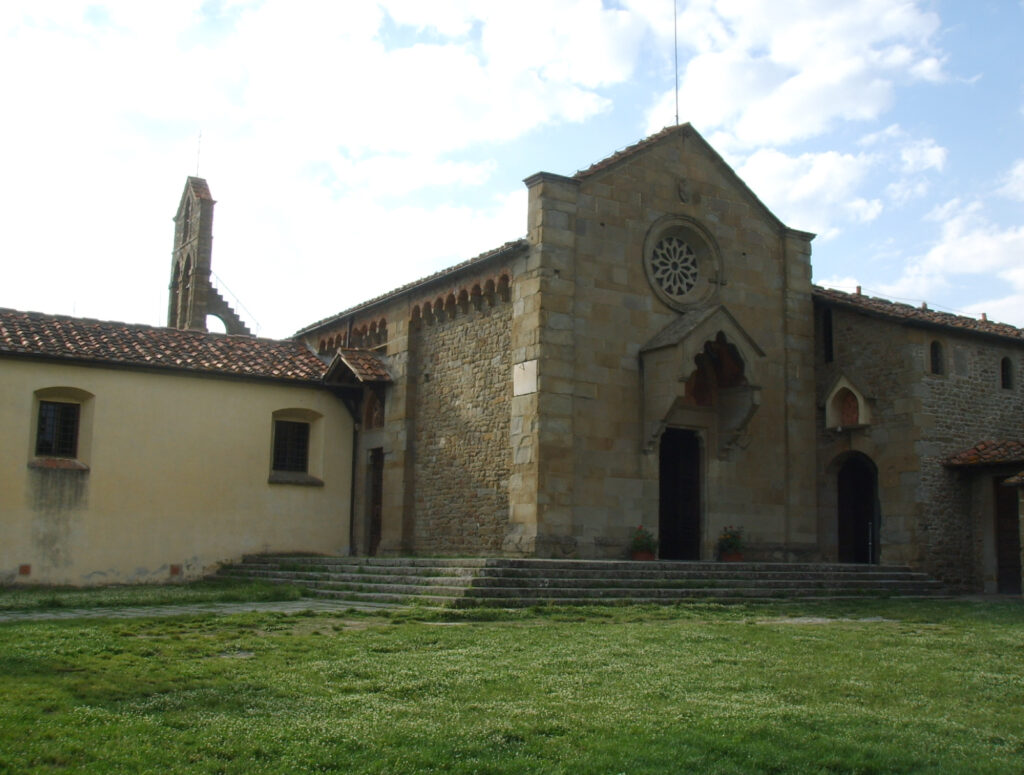
8. Badia Fiesolana – A former Benedictine abbey with a striking Renaissance-style façade, now part of a university institute.
Villas and Gardens
9. Villa Medici in Fiesole – One of the oldest Renaissance villas, commissioned by the Medici family in the 15th century, known for its beautiful gardens and views.
10. Villa Le Balze – A 20th-century villa designed in Renaissance style, surrounded by terraced gardens, now owned by Georgetown University.
11. Villa di Maiano – A historic villa with a well-preserved interior and extensive gardens, offering guided tours.
Scenic and Cultural Attractions
12. Piazza Mino da Fiesole – The central square, home to a statue of Garibaldi and the Palazzo Pretorio, with cafés and a lively atmosphere.
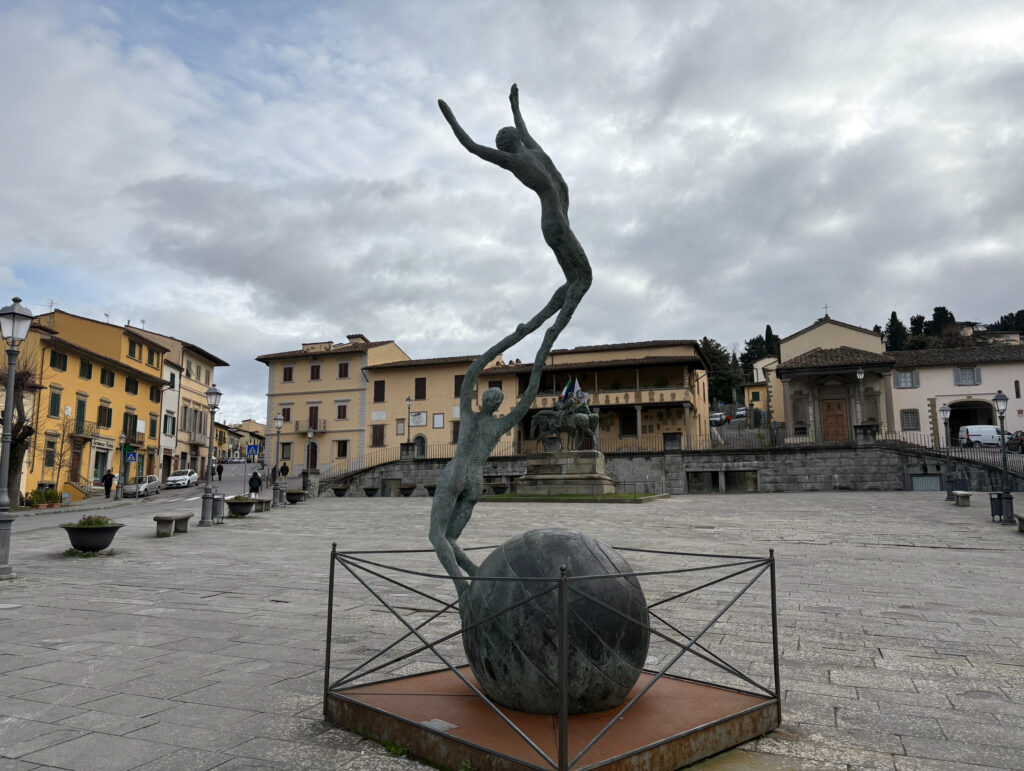
13. Monte Ceceri Park – A scenic nature park where Leonardo da Vinci is said to have tested his flying machine.
14. Museo Civico Archeologico – The Archaeological Museum, featuring artifacts from the Etruscan, Roman, and Lombard periods.
Viewpoints
15. Belvedere near San Francesco – A panoramic viewpoint offering breathtaking vistas of Florence and the surrounding Tuscan countryside.
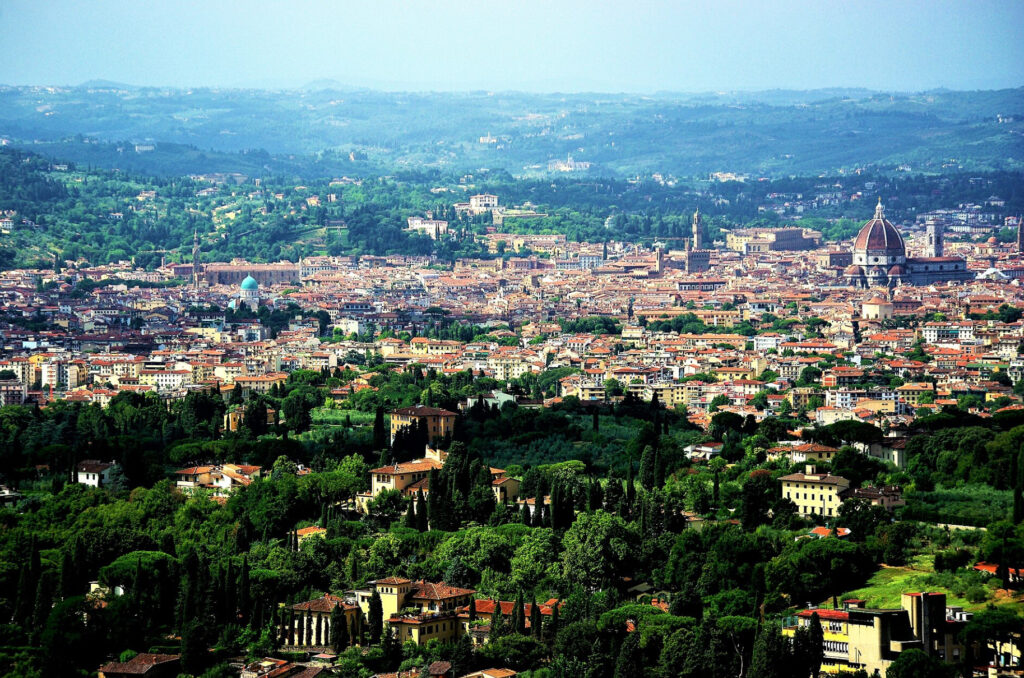
These sites make Fiesole an exceptional day-trip destination from Florence, blending history, nature, and art in a serene hilltop setting.
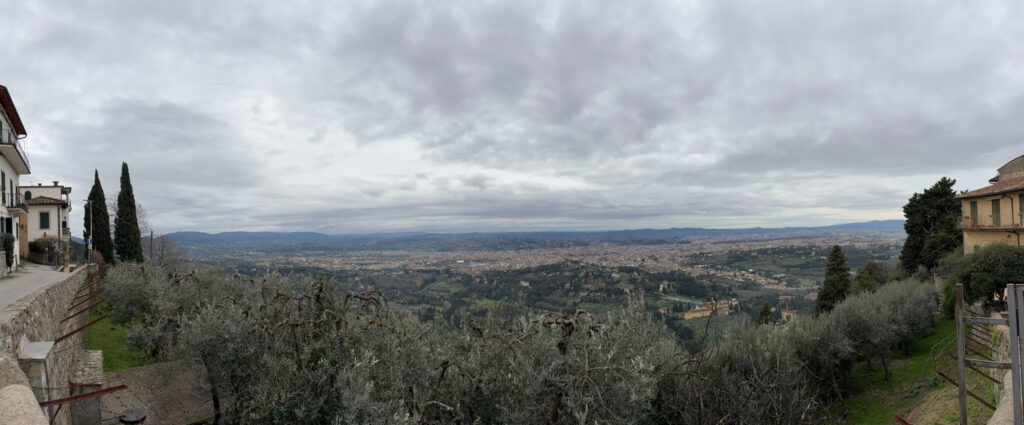
A Day in Fiesole: Ancient Ruins, Tuscan Views, and Too Much Pasta
I always imagined Florence as the ultimate Italian dream—Renaissance art, winding streets, and an infinite supply of gelato. But after a few days of dodging selfie sticks in the Uffizi and developing a complicated relationship with the city’s cobblestones (they’re charming, but my feet were starting to stage a revolt), I was ready for a quieter escape. That’s when I heard about Fiesole. Just a short ride from Florence, it promised ancient ruins, sweeping views, and a fraction of the crowds. Perfect.
Armed with a questionable sense of direction and an eager appetite, I boarded the No. 7 bus at Piazza San Marco, heading up into the Tuscan hills. The bus wound its way higher and higher, leaving the Renaissance grandeur of Florence behind in favor of cypress trees and ochre villas. The moment we reached Piazza Mino da Fiesole, I knew I had made the right choice. Unlike Florence’s busy piazzas, this one was peaceful, punctuated only by the occasional chatter of locals and the clinking of espresso cups.
A Sweet Start and a Step Back in Time
The first order of business was breakfast. Travel rules dictate that one must always start with pastry and caffeine, so I ducked into Pasticceria Alcedo, a small, family-run bakery that smelled like sugar and happiness. I ordered a cornetto and a cappuccino, but just as I was about to pay, my eyes landed on a slice of schiacciata alla fiorentina—a light, orange-scented sponge cake dusted with powdered sugar. “Just one more,” I told myself. It was my first mistake of the day (though a delicious one).
Fueled by sugar and enthusiasm, I made my way to Fiesole’s Archaeological Park. It was oddly humbling to stand in the middle of the Roman Theater, knowing that people had been watching plays here since the 1st century BCE. The stone seats were still intact, and for a brief moment, I considered putting on an impromptu performance of To Be or Not to Be. But there was no audience, and I feared the spirits of ancient Romans might judge my delivery.
Instead, I wandered through the remains of the Etruscan walls and the Roman baths, imagining what life must have been like here thousands of years ago. Probably less gelato, more gladiators. Just as I was contemplating this, a tortoise ambled across my path. I took it as a sign that it was time to slow down and enjoy the moment.
Monks, Views, and a Slightly Regrettable Lunch Decision
Next up was a climb to the Convent of San Francesco, perched at the highest point of Fiesole. The walk was short but steep, and by the time I reached the top, I was rethinking my pastry choices. But the view—oh, the view! Florence lay below like a Renaissance painting come to life, the dome of the Duomo glowing in the morning sun. A few monks in simple brown robes wandered about, seemingly unfazed by the breathtaking scenery they got to enjoy every day.
Feeling inspired (and admittedly a little hungry again), I made my way back down to Ristorante La Reggia degli Etruschi for lunch. The waiter greeted me with a knowing smile, as if he had already foreseen my fate. “You must try the Pici alla Fiesolana,” he said. I nodded, and before I knew it, a steaming plate of thick, hand-rolled pasta in a rich meat sauce appeared before me.
It was divine.
But then I made my second mistake of the day—I thought, “Why not follow it with a tagliata di Chianina?” The Florentine-style steak arrived, perfectly cooked and sliced, glistening under the midday sun. At that point, I was no longer dining. I was making a life choice. Halfway through, I realized I had dramatically underestimated both my stomach’s capacity and the generosity of Tuscan portion sizes.
By the time I finished, I wasn’t sure if I needed a nap or a pilgrimage.
A Slow Afternoon Among Villas and Trees
Determined to walk off at least a fraction of my meal, I meandered toward the Cathedral of San Romolo, a quiet Romanesque church that held the tomb of Bishop Leonardo Salutati. Its cool interior was a welcome respite from the afternoon heat, and I sat for a while, admiring the medieval frescoes and, let’s be honest, considering whether I could survive another meal.
From there, I strolled over to the Villa Medici, one of the oldest Renaissance villas. Its gardens were an oasis of tranquility, with neatly trimmed hedges, fountains, and cypress trees swaying in the breeze. I imagined wealthy Florentines from centuries past lounging here, sipping wine and discussing Michelangelo’s latest sculpture. If only they knew I was here, contemplating the consequences of pasta gluttony.
The final stretch of my adventure took me to Monte Ceceri Park, a scenic woodland famous for one rather odd historical footnote—this was where Leonardo da Vinci is believed to have tested his flying machine. As I stood atop the hill, looking over the Tuscan landscape, I could almost picture him launching some unfortunate assistant off the cliff with an experimental set of wings. Maybe it worked. Maybe it didn’t. Either way, I felt like I was standing in the middle of a legend.
Sunset, Sweet Wine, and the Journey Back
As the afternoon melted into early evening, I made one last stop at Terrazza 45, a café with a panoramic terrace overlooking Florence. I ordered a gelato affogato—a scoop of vanilla gelato drowned in a shot of hot espresso—and a small glass of Vin Santo with cantucci on the side. It was the kind of moment that made you pause and think, Yes, this is what life is supposed to feel like.
By the time I boarded the bus back to Florence, the sky had turned a soft shade of pink, casting a golden glow over the city below. Fiesole had been everything I hoped for—ancient and timeless, peaceful yet full of life, and most importantly, home to some truly spectacular pasta.
Would I return? Without a doubt. But next time, I might pace myself at lunch. Maybe.
